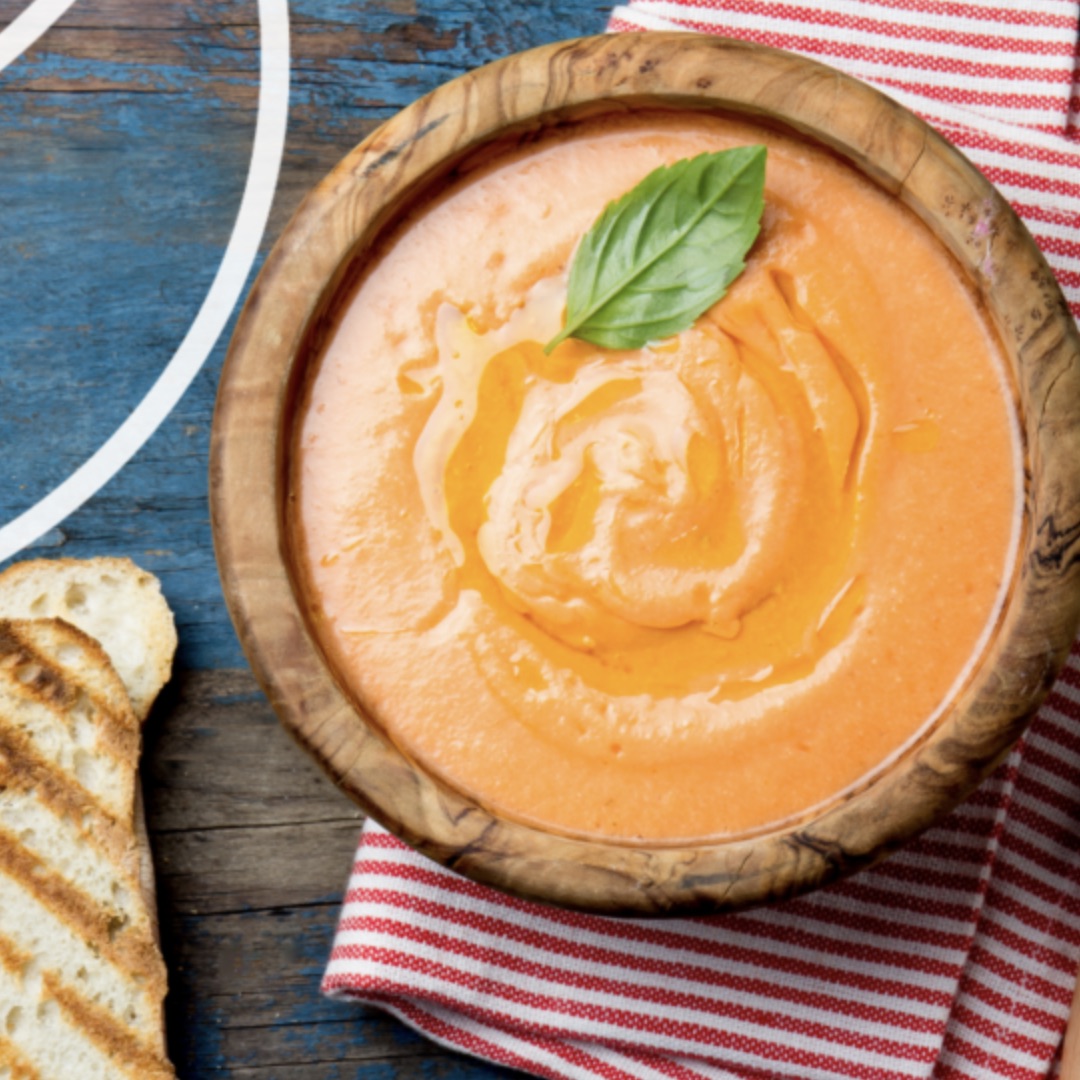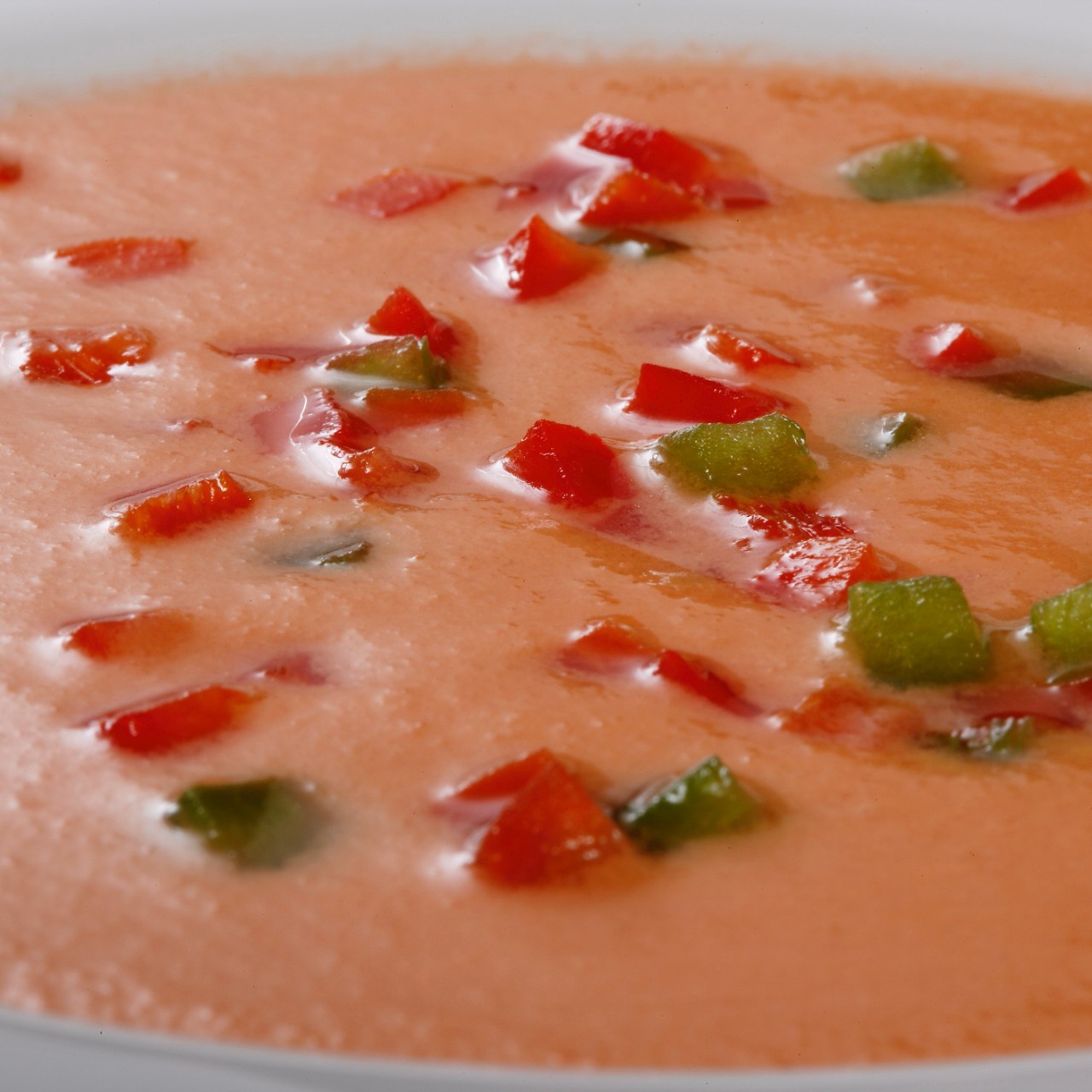.png.transform/rendition-xs/image_image%20(1).png)
Gazpacho: Healthy, Refreshing, and Delicious Pleasure in a Bottle
The popularity of the world’s most renowned cold soup is on the rise: a red marvel that can be enjoyed anywhere
Ferran Adrià, the creative mind behind the revolutionary elBulli restaurante, has remarked on several occasions that the tomatoes we consume today are a more evolved and palatable version of the original fruit, which we would currently be unable to bite into. This illustrates that in the realm of food and gastronomy, nothing is immutable and everything evolves. The same is true for gazpacho, probably the most popular cold soup worldwide.
In the 1611 book "Treasure of the Spanish Language," one of the earliest dictionaries of the Spanish language, Sebastián de Covarrubias provides a recipe for gazpacho, explaining that it is made with “toasted bread, oil, vinegar, and other mixed ingredients.” There is no mention of tomatoes. This is unsurprising since their integration was still pending, following their introduction from America after Christopher Columbus's discovery in 1492.
Indeed, what is now known as gazpacho adds tomatoes to the 1611 recipe. When? It is a good question. According to Majao gazpacho brand the vegetable was introduced sometime during the XVII century or even not before the XIX century, according to some sources. What we can find today also clarifies those “other things” mentioned in De Covarrubias book. Today, these extras typically include garlic, green pepper, cucumber, and salt. Although it is true that this last ingredient can be adjusted to personal taste, as can the inclusion of bread, which also varies depending on the desired consistency. Onion may also be present in some versions and absent in others.
What is certain is that the popularity of this cold Spanish soup is enormous worldwide. Its expansion has not only been due to its inclusion in menus by chefs from various places but also because of the introduction of bottled versions.

The Beginnings of Bottled Gazpacho
In the 1980s, Rafael de Aquino, associated with the Venta Ruiz restaurant in Seville, took some gazpacho home for lunch. And he did it in a mineral water bottle. “That’s when the idea hit me: no one’s done this before. I wanted to create bottled gazpacho, but no one took me seriously.” In 1992, during the Universal Exposition in Seville, he opened a gazpacho shop and succeeded in getting many to try the bottled version of this cold soup.“The truth is, people really liked it,” he says. His brand, La Gazpachería Andaluza, was born.
Until 2015, distribution was local and limited to some gourmet shops, but now they market their gazpacho, renamed Majao, in countries such as France, the United Kingdom, and Germany. He asserts that the key to their gazpacho is the seasoning and balance between the ingredients. “If you use too much oil, it will be too greasy. If you add too much salt, it will be too salty. The proportion between them is essential.”
Majao is a fresh gazpacho, meaning it has not undergone any pasteurization process. However, some brands use light pasteurization to extend their reach. This is the case with Arteoliva, which distributes its gazpacho with this thermal process to markets like Japan.
Additionally, Arteoliva not only produces the classic tomato gazpacho, which is the dominant vegetable in various formulations, “but also beet gazpacho and others with different vegetables”, they note. Fruits as cherries, strawberries or watermelon can be added to tomatoes to create different and surprising versions.

“Our aim is to expand the consumer base, reach potential customers within and outside Spain, and de-seasonalise consumption to increase monthly sales beyond the spring-summer months”, say sources from the company.
Majao and Arteoliva are just two of the many gazpacho brands that can be found outside Spain. Other well-known brands are Alvalle, Santa Teresa, La Española, Hida or El Navarrico, to name just a few.
A Even Brighter Future
Gazpacho producers agree that as a healthy and vegan-friendly recipe, its popularity will only grow in the coming years, making it an even more popular recipe worldwide. As Rafael de Aquino reminds us, it can be consumed “as a drink, a first course, or a snack between meals.” He also highlights the ‘perfect serve’ of this classic Spanish dish. “Garnishing is important for gazpacho. You can add chopped jamón Serrano or jamón Ibérico, croutons, fried fish Andalusian style, or any of the vegetables that are part of the classic recipe to enhance the desired flavor.” The beauty of gazpacho is that it allows each person to enjoy it as they prefer and whenever they like. However, it should always be served as chilled as possible. It couldn’t be any other way.

